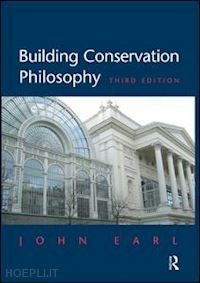This is a book about ideas rather than techniques. Public thirst for visible evidence of the past is not, as it is often represented, a recent phenomenon. It was already well developed when an overseer of ancient monuments was appointed in sixth-century Rome. But if the desire to preserve aspects of the past is to do more than respond to popular whims and fashions or represent the personal views of ivory-towered scholars and specialists, it needs to have some kind of solid logical basis. Philosophical questions are raised at every turn. On what basis can buildings be singled out as "historic buildings", demanding special protection? On what authority can we justify interfering with private property rights in pursuing such protective processes? And how should we judge what is acceptable and unacceptable in the treatment of the buildings we value? In this third, substantially revised edition, the author examines the nature of monuments and the varied motives for preserving them. He traces the history of movements to preserve old buildings and the furious conflicts that have frequently surrounded restoration campaigns. Philosophical problems arising in modern conservation practice, including such controversial issues as "skin-deep preservation" and the use of substitute materials, are considered in detail. More space is devoted in this edition to contextual issues. New sections deal with issues of sustainability and the relationship of buildings to the townscape and landscape. The number of illustrations has also been greatly increased. The book is designed especially for students approaching the subject for the first time but may well be found stimulating by practitioners. No easy formulae are offered. What conservators, have to nurture, the author insists, is an inquiring and self-critical frame of mind enabling them to proceed from comprehensive knowledge of the buildings for the time being in their care, via logical argument, to defensible, if not inevitable, solutions.











